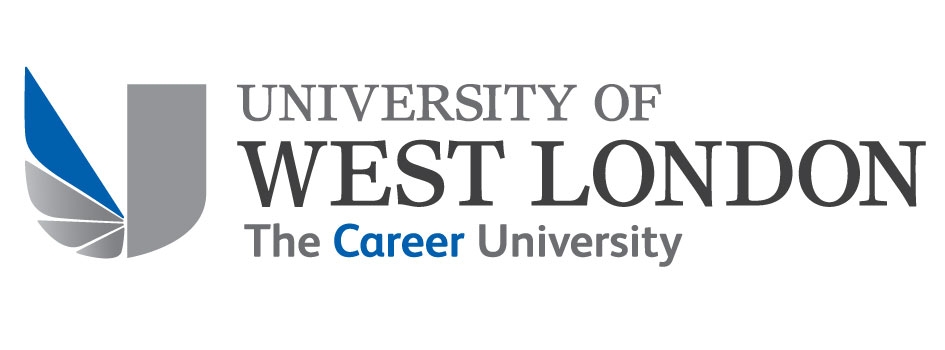Why leave?
The decision by British Red Cross to withdraw from the event medical sector signals a strategic refocus just as regulation is set to increase. Charities such as British Red Cross and St John Ambulance have been regular features at events for well over a hundred years. On 23 October 2019, British Red Cross announced they were to cease all event medical cover from 31 March 2020. The exit of a significant player in an industry sector that is still growing may seem paradoxical, but this decision reflects a complex business model that is undergoing considerable change. According to the market intelligence firm, Mintel (2019), the UK music concert and festival industry is currently estimated to be worth £2.61bn (up from £2bn in 2015) and is projected to be worth in excess of £3bn by 2022. UK spectator sports ticket sales, after a dip from 2015-17, now stand at more than £1.45bn and are predicted to grow in the short to medium term (Mintel, 2018). The industries which require medical provision are therefore buoyant, which leaves open the question of why a major provider would exit a growing industry?
As one of the oldest first aid organisations, British Red Cross has been providing first aid and crisis support since 1870. The organisation is probably best known for its response to communities in crisis, emergency response and supporting international development work but it has also a key visual presence at both large and small events since before there was a commercial event medical industry. The decision to cease covering events reflects a strategic refocussing on their crisis response activities. Michael Adamson, chief executive of British Red Cross, said:
‘In recent years, we have seen increasing pressures on both our income and the demands for our assistance, which means we must prioritise how we use every pound donated to us. Unfortunately, our event first aid work has been running at a financial loss for some time — the service still requires £1.8 million of donations annually to cover the shortfall between income and costs — and this is diverting vital funds from our efforts to provide emergency support for major domestic and global crises. So, it is with real sadness that we have taken the very difficult decision to close our event first aid service by March 31, 2020.’
The BRC’s event work has been declining for a number of years. Successive annual reports show patient numbers reduced from 26,400 in 2016 to 11,500 in 2018 (British Red Cross, 2016; 2018). Part of this was deliberate: a review of their event first aid model in 2017 led to a decision to reduce their event portfolio by two-thirds in order to focus more on medium and large events (British Red Cross, 2017). This decision illustrates a unique distinction between private commercial operations and non-profits such as British Red Cross and St John Ambulance. Whilst the cover provided to medium and large events (particularly those being run for commercial profit) is charged at market rates, surpluses from these events go towards providing a significant amount of below-cost or pro bono cover for small community-based events. Events such as school fetes or fairs which would otherwise not be able to afford commercial first aid cover. These events, which are of little interest to a private provider, will now find it more difficult to source reputable first aid cover.
Strategic alignment
Organisations that operate a portfolio of activities often have to make difficult decisions in relation to where they direct resources. These decisions can be particularly challenging when the revenue from one activity is used to subsidise the activity in another area. Subsidised areas may be tolerated if they present long-term opportunities for growth or (more commonly in the third sector) have a particularly strong resonance with the company’s core purpose or mission. Having a clearly defined purpose helps to ensure strategic alignment with an organisation’s activities. The decision of British Red Cross represents a renewed strategic focus on crisis response activities. This is reflected in a clearly defined purpose to ‘mobilise the power of humanity so that individuals and communities can prepare for, respond to and recover from crises’ (British Red Cross, 2018). When viewed through this lens, the provision of first aid at planned events does not make strategic sense in relation to other important activities. While the importance of making every pound count is often most acutely felt in the third sector, there is an important lesson here for all companies in ensuring that a clear sense of purpose drives decisions about where to direct finite resources.
Even when consolidation of a portfolio makes strategic sense, there are still challenges to be overcome in terms of the impact and fallout of such a decision. A realignment of operational activities will inevitably result in changes to organisational structure and personnel, potentially meaning role change or even job losses. Managing these changes requires sensitivity and clear leadership. Organisations need to have sufficient reflexive capabilities to be able to integrate feedback from changes into organisational structures (Hautz, Seidl & Whittington, 2017). The case of British Red Cross reflects the difficult decisions faced by organisations and supports findings in research that identify the co-dependent relationship between strategy and structure (Jarzabkowski, Le, & Balogun, 2018). My own research has identified how changes in organisational structure can trigger strategic renewal, which in turn causes a cascade of restructure down the organisation (Garlick, 2019). Strategic renewal is therefore as much about getting the right people in the right roles, as it is about ensuring the best future direction of the organisation. In an increasingly dynamic and fast-paced world, organisations must be responsive to changes in the external environment, while ensuring they have the capabilities and leadership to manage those change effectively.
Increased regulation
In the professional arena, the event medical sector has become increasingly crowded in recent years. Numerous new providers have sprung up in response to the growing demand for their services. This growth in demand has been complimented by an increase in current or former NHS staff looking for new opportunities or income, as well as a relaxation of the first aid regulations making it easier to train first aiders for events. However, as in any crowded market, quality varies. While minor injuries and ailments are almost certain at events and are generally easy to deal with. However, it is impossible to predict when someone may fall seriously ill or have an accident that will need more advanced skills. These skills are often a key part of the sales pitch. The Purple Guide (2015) has become the principle source of guidance for health, safety and welfare at events. Now produced by the Event Industry Forum, the guide advocates an individual risk assessment that takes into account the nature of the event, numbers attending, age profile, activities on site and environmental conditions, as well as casualty data from previous events where it is available. Ultimately, organisers are paying for something that may or may not get tested at their event, which may encourage the use of the cheapest option. An under-resourced event may ‘get lucky’ and just happen to have the right people, in the right place, at the right time. Conversely, an event that has greater medical resources than a risk assessment may have identified may still become overwhelmed if multiple severely ill patients occur simultaneously or in hard to reach places. In short, organisers may be paying for a service that is never truly tested until it is too late. Unfortunately, with a fragmenting market, there is the risk that cowboy outfits may take advantage of this uncertainty and sell a sub-standard service.
Regulators are starting to take notice, and action should follow. The Care Quality Commission, which regulates ambulance activity in the UK, has for some time had event medicine in its sights. In November 2018, the Deputy Chief Inspector and National Ambulance Lead for the Care Quality Commission wrote to local authorities advising them of concerns in medical cover at temporary events (Armistead, 2018). Similarly, a Care Quality Commission report published in March 2019 highlighted significant risks in medical cover at temporary events and recommended working with the Department for Health and Social Care to review whether increased regulation was required (Care Quality Commission, 2019). A review of regulation could mean that only providers who are registered with the Care Quality Commission will be permitted to provide medical cover at events. Given that some large events now have facilities not dissimilar to a local hospital, this is perhaps unsurprising. However, the impact will be keenly felt by smaller events charged higher prices by companies passing on the cost of registration.
Conclusion
Refocussing by British Red Cross has come as a major blow to both staff and volunteers. The charity is taking steps to mitigate the impact and is in talks with fellow charity St John Ambulance to see how volunteers could be transferred across and be able to continue to provide event medical cover as part of their charitable and commercial output. The loss of British Red Cross from certain events means those organising small and/or not-for-profit events will find it increasingly difficult to source appropriate cover at reasonable rates. What makes the decision to withdraw doubly sad is that British Red Cross would have been well placed to take advantage of increased regulation and compete more effectively in the sector. As an established provider of ambulance and other response services, they were already Care Quality Commission registered, and could therefore have been poised to take the market share from private providers unwilling or unable to secure Care Quality Commission approval.
So, what does this mean for event organisers? With one fewer highly respected name to choose from, event organisers will have to select their provider carefully. However, two particular event types will be disproportionately affected. Major large events requiring a level of resource beyond the capability of most first aid providers, and small community events unable to afford to pay for medical cover. For larger events, this might mean either scaling back the event or using multiple providers to ensure sufficient medical provision. For smaller events, the impact could result in increased costs being passed on to attendees in the form of higher ticket prices, including events that until now have been free to attend.
NB: An abridged version of this article was published by the magazine Access All Areas on 28 October 2019
References
Armistead, E. (2018) ‘Letter to Local Authority CEOs’. 16 November. Available from: https://www.cqc.org.uk/news/stories/medical-cover-temporary-events
British Red Cross (2016) Trustees Report & Accounts . London: British Red Cross
British Red Cross (2017) Trustees Report & Accounts . London: British Red Cross
British Red Cross (2018) Trustees Report & Accounts . London: British Red Cross
Care Quality Commission (2019) The state of care in independent ambulance services . Newcastle Upon Tyne: CQC
Garlick, A. (2019) ‘Participation strategy in a third sector environment: Understanding process and practice’. British Academy of Management Conference , 3-5 September 2019. Birmingham: Aston University
Hautz, J. Seidl, D. & Whittington, R. (2017) Open strategy: Dimensions, dilemmas, dynamics, Long Range Planning , 50(3): 298-309 doi: 10.1016/j.lrp.2016.12.001
Jarzabkowski, P. Lê, J.K. & Balogun, J. (2018) The social practice of co-evolving strategy and structure to realize mandated radical change. Academy of Management Journal , 62(3): 850-882 doi: 10.5465/amj.2016.0689
Mintel (2018) Spectator Sports UK . Available at: http://academic.mintel.com
Mintel (2019) Music Concerts and Festivals UK . Available at: http://academic.mintel.com
The Purple Guide (2015) The Purple Guide to Health, Safety and Welfare at Music and other Events , Chapter 5: Medical, Chepstow: Event Industry Forum. Available at: https://www.thepurpleguide.co.uk/

